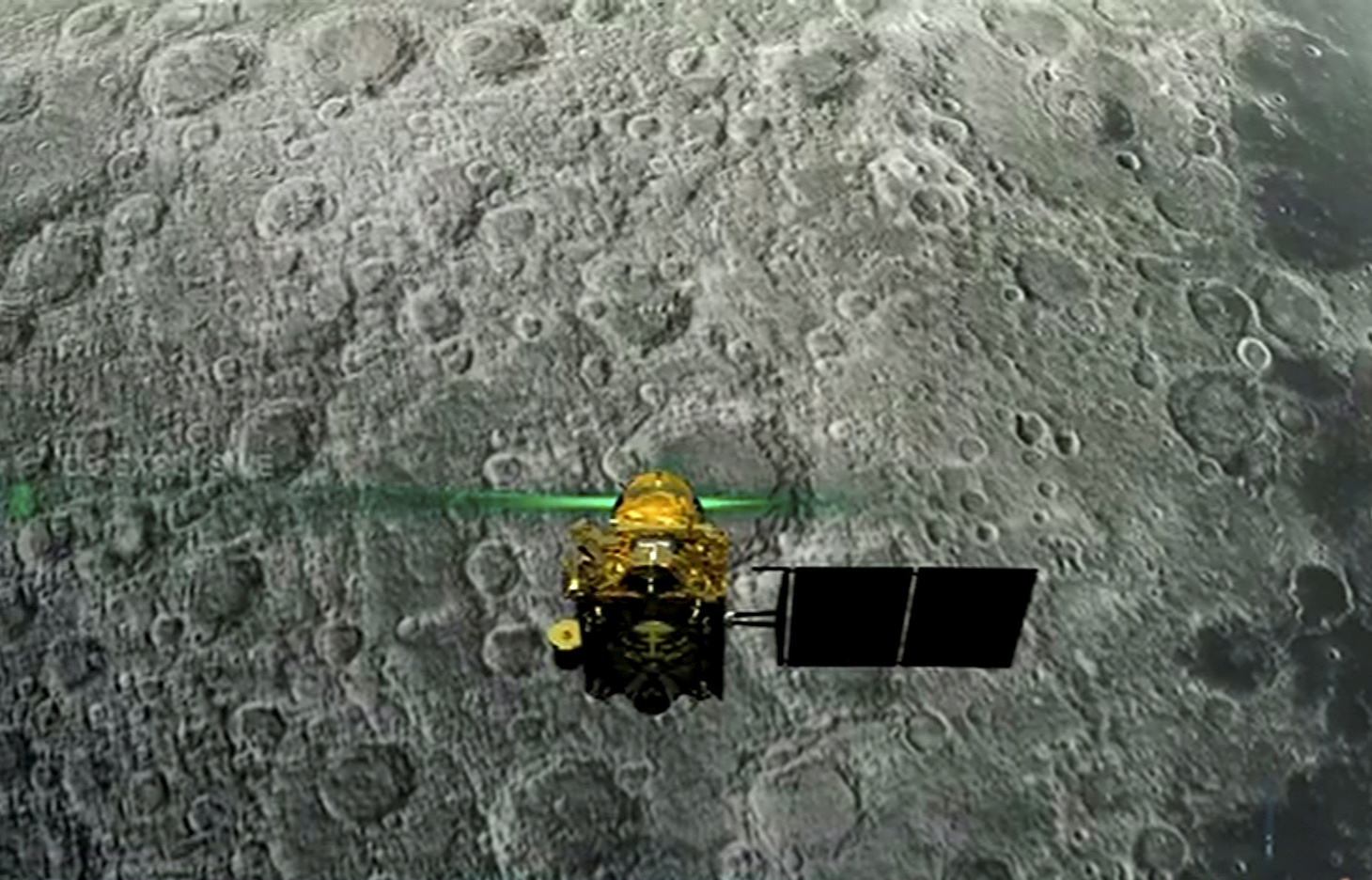
Chandrayaan lander still in one piece, re-link efforts on, says Isro
The Vikram lander of Chandrayaan-2, which lost contact with Isro's ground station in Bengaluru on September 7, is there on the on the moon's surface as a single piece in a tilted position, officials said. ISRO continues to make all-out efforts to establish link with the lander, an official said.

The Vikram lander of Chandrayaan-2, which lost contact with Isro’s ground station in Bengaluru on September 7, is there on the on the moon’s surface as a single piece in a tilted position, officials said.
Indian Space Research Organisation (ISRO) continued to make all-out efforts to establish link with the lander, the official said.
Vikram, with rover Pragyan housed inside it, hit the lunar surface after communication with the ground-stations was lost during its final descent, just 2.1 km above the lunar surface, in the early hours of Saturday (September 7).
“It had a hard-landing very close to the planned (touch-down) site as per the images sent by the on-board camera of the orbiter. The lander is there as a single piece, not broken into pieces. It’s in a tilted position,” an ISRO official associated with the mission claimed on Monday (September 9).
Eighth Column: David and his slingshot: How Isro customised rocket science
“We are making all-out efforts to see whether communication can be re-established with the lander,” the official said. “An ISRO team is the on the job at ISRO Telemetry, Tracking and Command Network (ISTRAC) here.”
Chandrayaan-2 comprises an orbiter, lander (Vikram) and rover (Pragyan). The mission life of the lander and rover is one Lunar day, which is equal to 14 earth days.
Rare praise from Pakistan, from astronaut Namira Salim
As Prime Minister Narendra Modi and other top dignitaries across the world hailed Isro and backed the space agency’s efforts, several Pakistanis took to Twitter to troll them.
However, a Pakistani woman astronaut Namira Salim went against the grain and patted Isro on the back, saying the attempted soft landing on moon was a giant leap for the entire global space industry.
“I congratulate India and Isro on its historic attempt to make a soft landing of the Vikram lander at the South Pole of the Moon.”
“The Chandaryaan-2 lunar mission is indeed a giant leap for South Asia which not only makes the region, but the entire global space industry proud,” Pakistani astronaut Namira Salim said.
Effortson to relink lander
ISRO Chairman K Sivan had said on Saturday that the space agency would try to restore link with the lander for 14 days, and reiterated the resolve on Sunday after the orbiters camera spotted it on the Lunar surface.
Also read: Those terrifying few minutes at ISRO during Chandrayaan-2 descent
An ISRO official said, “Unless and until everything is intact (lander), its very difficult (to re-establish contact). Chances are less. Only if it had soft-landing, and if all systems functioned, then only communication can be restored. Things are bleak as of now.”
“I will rate it (restoring link) as good,” another senior official of the space agency said, raising hope that lander springing to life again is not ruled out.
“But there are limitations. We have experience of recovering spacecraft (which had lost contact) in geostationary orbit. But here (in the case of Vikram), that kind of operational flexibility is not there. Already its lying on the surface of the Moon, and we cannot reorient it. Vital thing is antennas will have to pointed towards the ground station or the orbiter. Such operation is extremely difficult. At the same time, chances are good and we will have to keep our fingers crossed,” the official said.
Also read: You have inspired us, will explore solar system together: NASA to ISRO
The official said the lander generating power is not an issue, as it has “solar panels all around it” and it also has “internal batteries” which “are not used much.” Vikram carried three payloads Radio Anatomy of Moon Bound Hypersensitive Ionosphere and Atmosphere (RAMBHA), Chandras Surface Thermo-physical Experiment (ChaSTE) and Instrument for Lunar Seismic Activity (ILSA).

